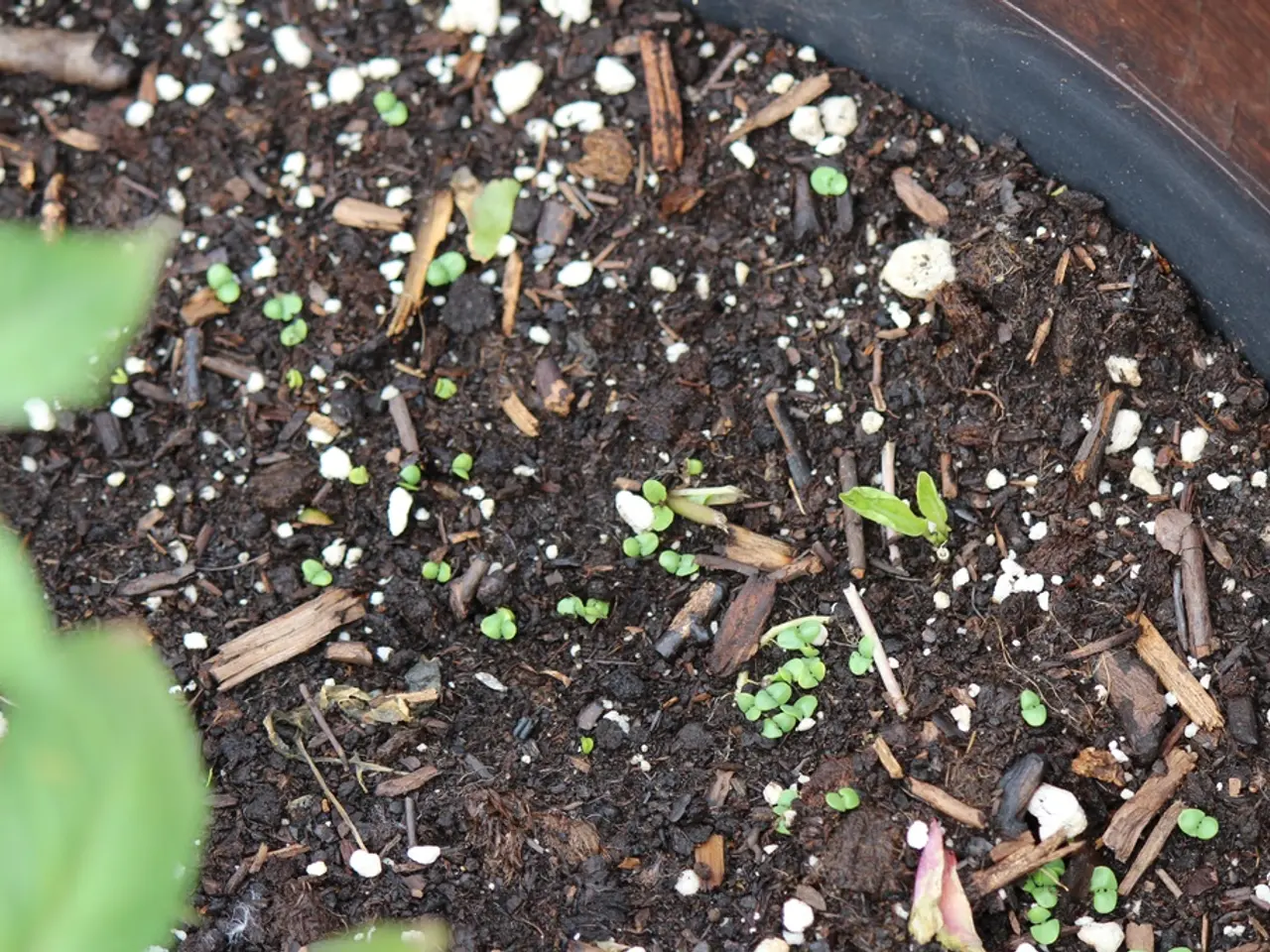Optimizing Soil Nutrition: Strategies for Supplying Essential Nourishment to Your Garden
For home gardeners, understanding the soil in their backyard is essential for cultivating a thriving garden. Soil testing is the first step in this process, providing valuable insights into the condition of the soil, including its pH, nutrient levels, and organic matter content.
There are several methods for testing soil, each with its own advantages. DIY home testing kits, for instance, are affordable and offer quick results on basic properties like pH and major nutrients such as nitrogen, phosphorus, and potassium. These kits use color-coded strips or chemicals and can be completed in about 15 minutes, providing a general sense of soil health.
More precise testing can be achieved with digital pH meters, which offer real-time, highly accurate pH readings with a fine resolution of 0.1 pH units. This level of precision is particularly useful for tailoring soil conditions for specific plants that are sensitive to pH, such as blueberries or brassicas.
For a comprehensive analysis, professional laboratory testing is recommended. This approach provides detailed data on the nutrient profile, organic matter, contaminants, salinity, and micronutrients. Laboratories also offer fertilizer recommendations based on the results, making this option essential for safe vegetable gardening or for those working with unknown urban soils.
Regardless of the testing method chosen, it is recommended to test your soil every 3 to 5 years to ensure its continued health. To collect soil samples, take them from several spots in your garden (around 4-6 inches deep), mix them to create a representative sample, and either test them at home or send them to a lab.
Once you have your soil test results, you can amend your soil with the necessary fertilizers and organic matter to enhance its nutrient content. Organic matter such as compost, well-rotted manure, leaf mold, or green manures can improve soil structure, nutrient content, and microbial activity.
Mulch is another effective soil amendment, conserving moisture, suppressing weeds, and adding nutrients as it decomposes. Practicing crop rotation and cover crops helps maintain nutrient balance and soil health, preventing depletion.
Avoid excessive tilling, as over-tilling can disrupt soil structure and beneficial organisms. Minimal or no-till methods preserve soil quality. To adjust pH naturally, use lime to raise pH if acidic, or sulfur to lower pH, guided by soil test results.
Encourage soil life by fostering earthworms and beneficial microbes, which boost soil fertility and aeration. Organic matter feeds them, so incorporating compost, manure, or green manures into your soil will help these beneficial organisms thrive.
By testing your soil with easy home kits or more precise lab analyses, then improving it with organic amendments and sustainable practices, you can create a thriving garden environment naturally. Taking soil samples at any time, but doing so in the spring or fall is often ideal, as these seasons offer the best conditions for soil testing.
- For those interested in health-and-wellness and healthy-diets, understanding the nutrient levels in their soil can be essential for cultivating a thriving garden.
- Gardening and home-and-garden enthusiasts might find fitting their garden's soil pH with digital pH meters beneficial, as this precision is particularly useful for tailoring soil conditions for specific plants.
- To ensure a nutritious lifestyle and foster healthy plants, home gardeners could consider professional laboratory testing for a comprehensive analysis of their soil's nutrient profile, organic matter, contaminants, and other factors.
- Adopting sustainable practices like minimal tilling, crop rotation, and the use of organic matter, mulch, and beneficial microbes can help maintain the health of the soil and contribute to a healthy-diets lifestyle through thriving vegetable gardens.








